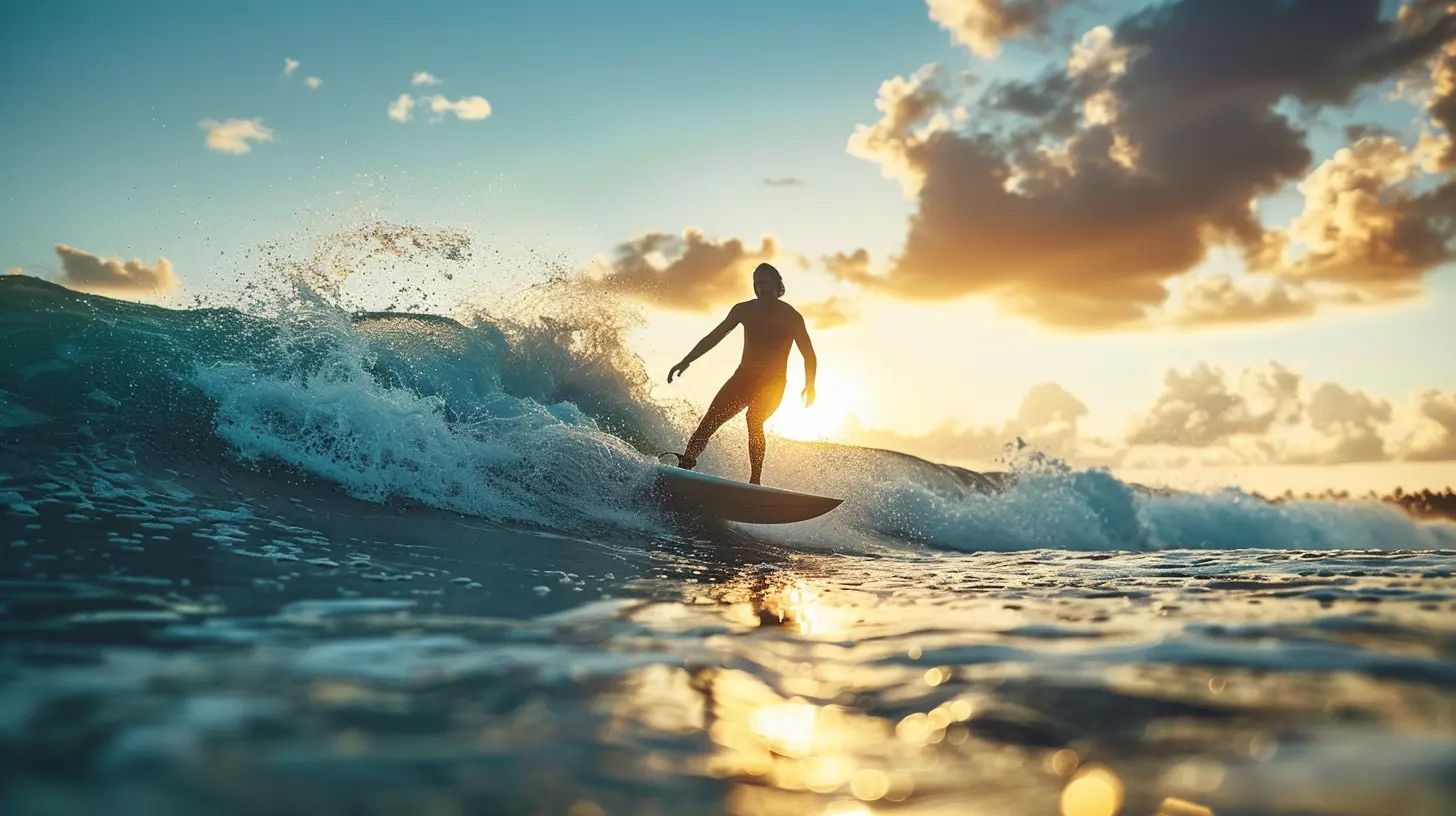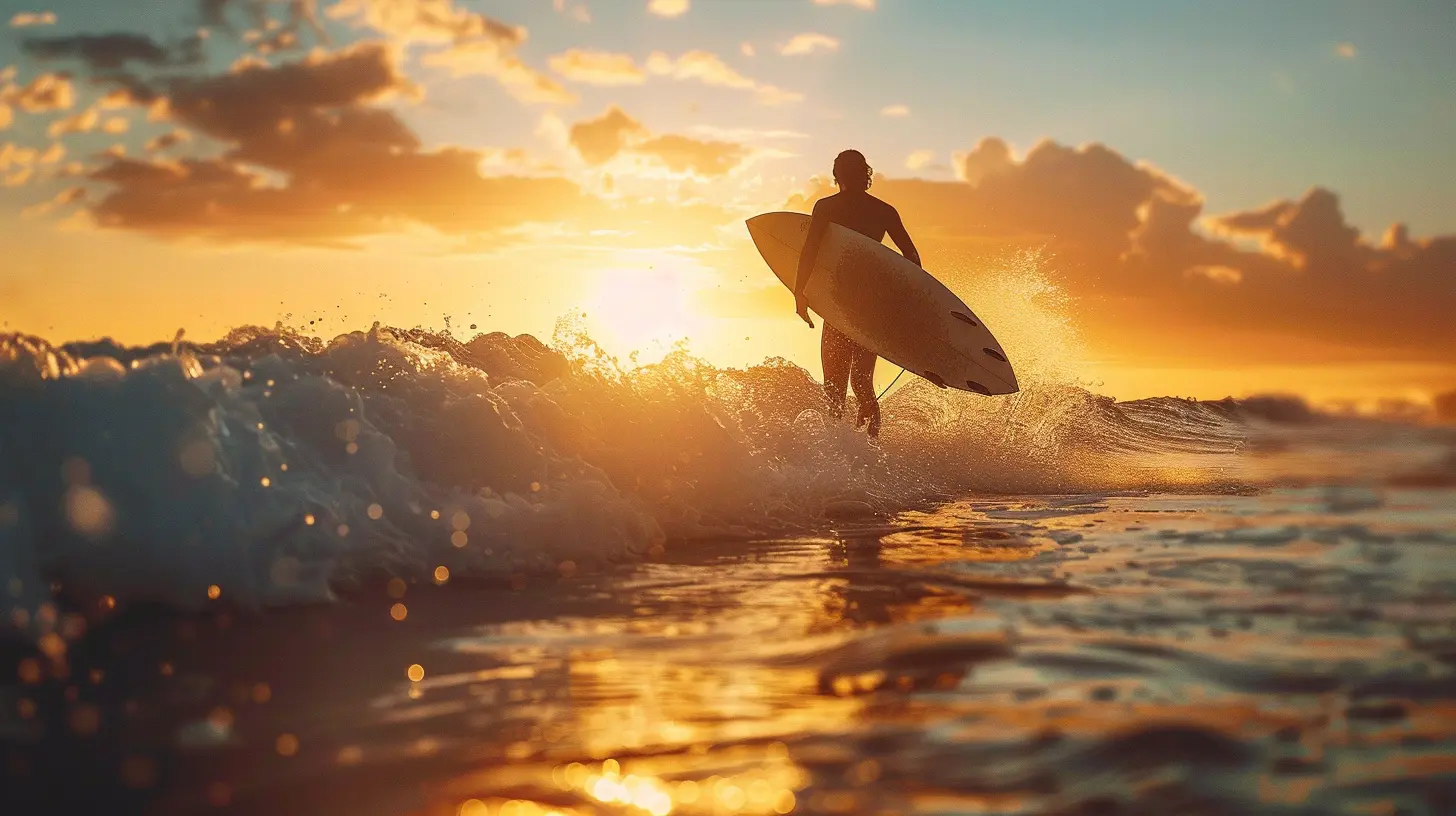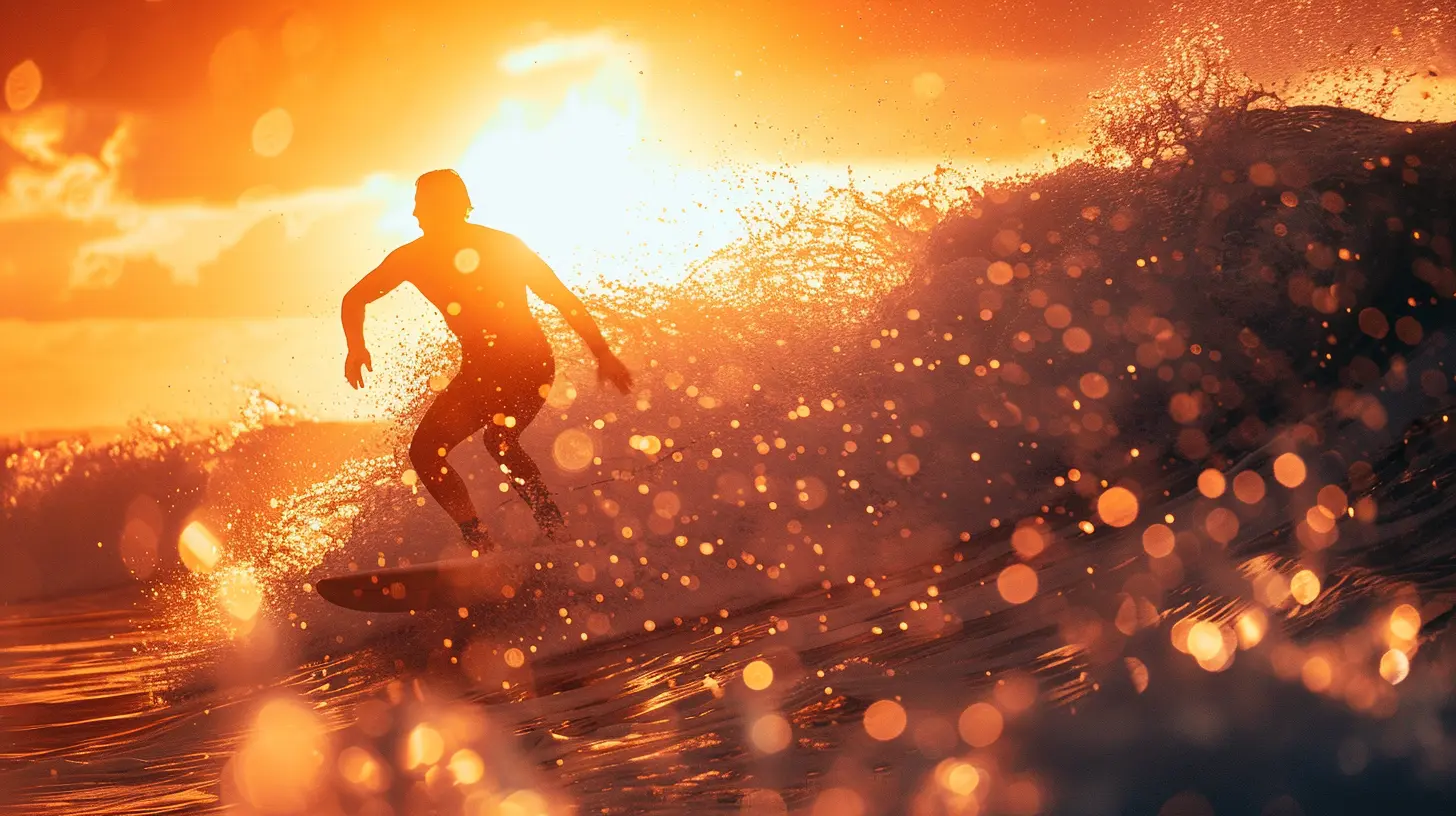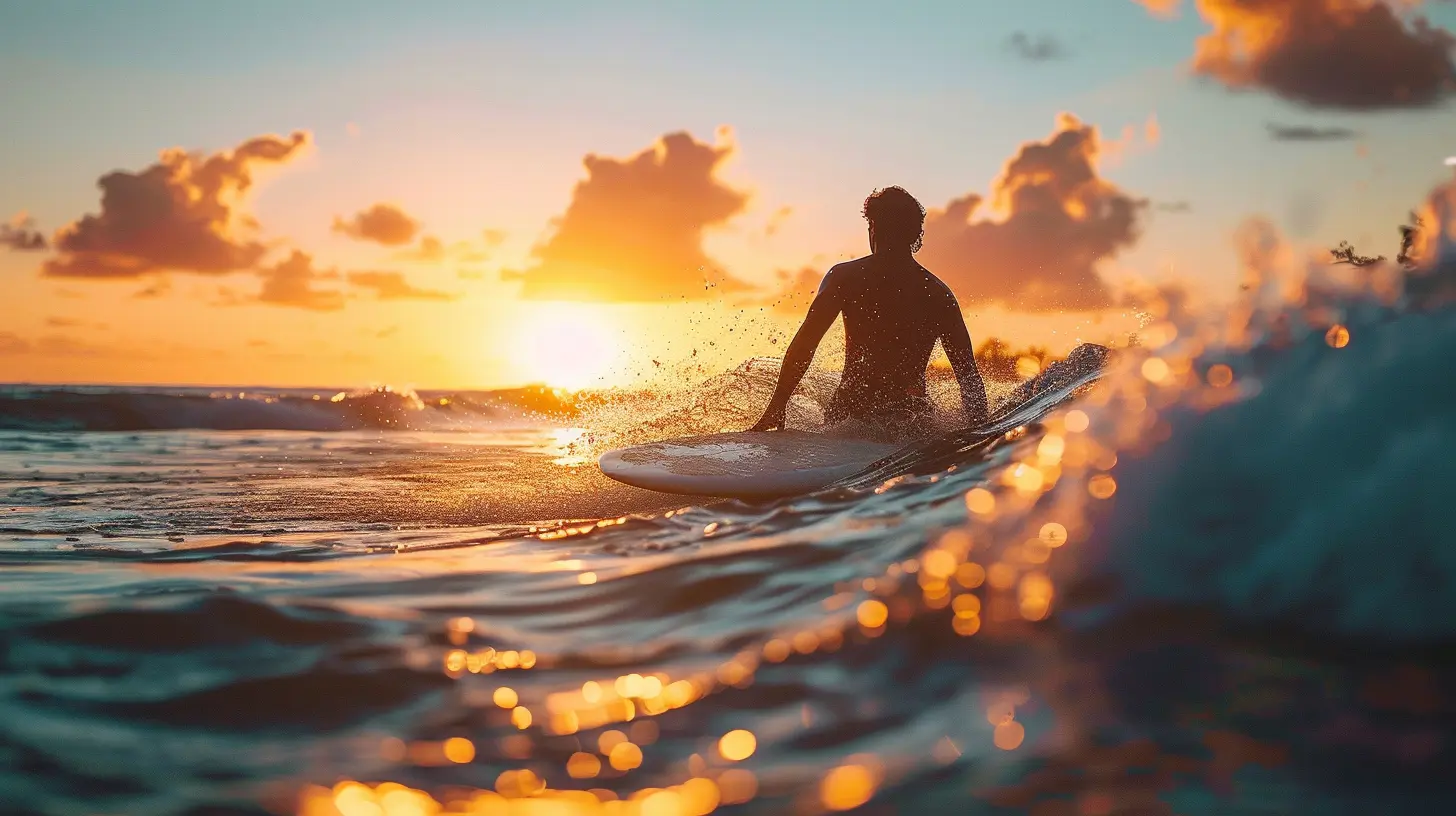A Guide to Surfing Tides: What You Need to Know
13 June 2025
Surfing isn't just about grabbing a board, paddling out, and catching waves. If you really want to master the art, you need to understand the ocean—and that includes knowing how the tides work. The tide can be your best friend or your worst enemy, dictating wave size, speed, and surf conditions.
So, if you're tired of showing up at the wrong time and missing the best waves, this guide is for you. Let's break down the essentials of surfing tides in a way that's easy to understand and, most importantly, helps you catch better waves. 
Why Do Tides Matter in Surfing?
Imagine heading to the beach, waxed-up board in hand, only to find the waves are either completely flat or dumping like crazy. Frustrating, right? The culprit is often the tide.Tides influence the depth of the water, the way waves break, and the overall quality of a surf session. Some surf spots work best at high tide, while others fire up during low tide. Understanding this can mean the difference between an epic surf session and a wasted trip to the beach. 
What Causes Tides?
Tides are driven by the gravitational dance between the Earth, the Moon, and the Sun. The Moon has the biggest influence, pulling the ocean toward it, creating a high tide. Meanwhile, the side of the Earth opposite the Moon also experiences high tide due to centrifugal force.In between these two bulges of water? Low tide. This cycle repeats roughly every 12 hours and 25 minutes, meaning the tide changes about four times a day. 
Types of Tides Every Surfer Should Know
1. High Tide
High tide happens when the ocean reaches its peak water level. Some surf breaks handle high tide well, while others become too deep for waves to break properly.🔹 Best for: Beach breaks and deep-water reefs.
🔹 Challenges: Can make waves mushy or close out.
2. Low Tide
Low tide means the water has receded to its lowest level. This can expose sandbars or reef structures, sometimes making waves break more hollow and fast.🔹 Best for: Reef breaks and point breaks.
🔹 Challenges: Can make some surf spots too shallow, increasing the risk of injuries from the ocean floor.
3. Mid Tide
Mid tide is the sweet spot between high and low tide. This is when many surf spots fire up, offering the best balance between wave shape and power.🔹 Best for: A variety of surf breaks.
🔹 Challenges: Conditions can shift quickly.
4. Spring vs. Neap Tides
Ever noticed some days have huge tidal swings while others are more moderate? That’s because of spring and neap tides:- Spring Tides (Not related to the season) – Occur during full and new moons, producing higher high tides and lower low tides.
- Neap Tides – Happen during the first and third quarters of the moon, creating less extreme tidal changes.
Understanding these cycles helps predict how much the tide will shift during your surf session. 
How to Read a Tide Chart for Surfing
Tide charts might look intimidating at first, but they’re actually pretty simple once you get the hang of them. Here’s what to focus on:1. Tide Times – Check when high and low tides are happening.
2. Tidal Range – The difference between high and low tide. Bigger ranges mean stronger currents.
3. Moon Phases – Knowing if you’re dealing with spring or neap tides helps predict wave conditions.
Most surf forecasting websites and apps (like Magicseaweed, Surfline, and Windy) provide this info, so it’s easy to plan your session.
How Tides Affect Different Surf Breaks
Not all breaks react the same way to tides. Here’s how tide influence varies depending on the type of break:Beach Breaks
Beach breaks are typically sand-bottomed, and tides play a huge role in how they behave.- High tide – Can make waves slow and mushy.
- Low tide – May cause waves to barrel more but can also create closeouts.
- Mid tide – Often ideal, offering a balance between power and shape.
Reef Breaks
Reef breaks rely on underwater rock formations to shape the waves.- High tide – Sometimes makes waves too deep and sluggish.
- Low tide – Can expose reefs, making wipeouts more dangerous.
- Mid tide – Often best, providing the right mix of water depth and wave shape.
Point Breaks
Point breaks wrap around a rocky or sandy point and often work well in varying tide conditions.- High tide – Can slow waves down, making for cruisy rides.
- Low tide – Makes waves faster and hollower.
- Mid tide – Usually the golden zone.
Each surf spot has its own personality, so it’s worth observing how different tidal phases affect your local break.
Wind and Tide: The Power Couple of Surf Conditions
Tide alone doesn’t determine how good the waves are—wind plays a crucial role too.- Offshore wind (blowing from land to sea) holds waves up, creating those dreamy, glassy conditions.
- Onshore wind (blowing from sea to land) messes up wave faces, making them choppy and unpredictable.
Combine a favorable tide with the right wind, and you’ve got yourself a world-class surf session.
Best Tides for Surfing: Finding Your Sweet Spot
The “best” tide for surfing depends on:✅ Your local break – Some spots fire on low tide, others need high tide.
✅ Your skill level – Beginners often find mid-to-high tide more forgiving.
✅ Wave type preference – If you love barrels, low tide at a reef break might be your jam.
The key? Keep track of your surf sessions. Noting which tides work best at your favorite spots will make all the difference.
Final Tips for Surfing Tides Like a Pro
✔ Check tide charts before heading out – Avoid wasting time on bad conditions.✔ Observe how tides affect your local break – Experience is everything.
✔ Factor in wind conditions – Good tide + bad wind = rough session.
✔ Be mindful of hazards – Low tide at reef breaks can be sketchy.
Mastering tides won’t just improve your wave count—it’ll make you a smarter, more strategic surfer.
Wrapping It Up
Understanding tides is a game-changer for any surfer. Whether you're a beginner or a seasoned wave rider, knowing when the ocean is working in your favor can transform an average session into an unforgettable one.So, next time you hit the waves, don’t leave it to chance. Check those tide charts, time your session wisely, and score the best waves possible. Happy surfing!
all images in this post were generated using AI tools
Category:
SurfingAuthor:

Onyx Frye
Discussion
rate this article
3 comments
Pia McKinney
This guide is essential for any surfer. Understanding tides can make or break your experience. Master these insights, and you'll elevate your surfing game to new heights. Ride those waves confidently!
June 20, 2025 at 4:21 AM

Onyx Frye
Thank you! I'm glad you found the guide helpful. Understanding tides truly is key to enhancing the surfing experience!
Zanthe McConnell
Thank you for this insightful guide! Understanding tides truly enhances the surfing experience. Can’t wait to hit the waves!
June 15, 2025 at 4:27 AM

Onyx Frye
Thank you for your kind words! Enjoy your time on the waves! 🏄♂️
Jet McMahan
Ride the waves, embrace the tides—conquer the ocean's rhythm!
June 14, 2025 at 10:45 AM

Onyx Frye
Thank you! Embracing the ocean's rhythm is key to mastering surfing. Enjoy the ride! 🌊🏄♂️



